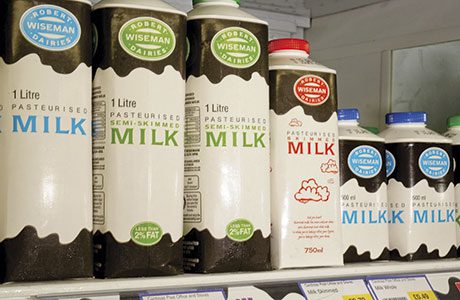
There’s no agreed technical definition of must-stocks. But some lines are simply expected by consumers to be on shelf and others should be prioritised because they reflect current trends or help retailers to make profitable impulse sales. We consider a strategy for key traditional lines and modern opportunities.
THE main reason for thinking of a particular product category, product or brand as a must-stock is simple, consumers think of it in that way. They expect it to be on the shelf when they visit a store and they have come to depend on it being there.
Get caught without such lines in place and you disappoint your customers.
That’s unlikely ever to be a good thing from a retail business strategy point of view but some surveys in recent years have tried to put numbers on the issue.
Some consumers will be slightly but not very tolerant. If something they need isn’t in stock it’s likely to be a case of two or three strikes and you’re out.
But, as well as being expected by consumers, such products have positive benefits for retailers too. They are classic footfall drivers.
And that leads on to considering other candidates for must-stock status too. Once the everyday essentials and big brands have brought people into the store some other brands and lines are particularly good at encouraging impulse purchases, which are crucial to maximising revenue and profit in convenience outlets.
And then there are other reasons to prioritise certain lines. Some, for example are good at attracting young adult shoppers – important customers because they could be a source of regular business for a long time to come.
Traditional must-stocks include everyday essentials such as milk and bread and bakery and established footfall drivers like tobacco and news and magazines.
With such lines there is a simple but crucial priority – availability.
• Milk might traditionally have been thought of as a morning product – because in the old days that’s when milkmen delivered to the doorstep.
But in some stores it’s more likely to be bought after the afternoon school run or by workers heading home after a long day at a computer screen or on the phone lines.
So among typical in-store marketing recommendations are pleas that retailers and their staff ensure that milk is available and well-faced up, and well-merchandised across the key range of core products and other important packs, throughout the trading day.
Some major supermarket units and some discounter outlets can be surprisingly poor at ensuring late in the day availability, which provides opportunities for convenience stores to show superior customer service.
Milk firms often suggest either giving certain staff members special responsibility for milk or having a very set and frequent schedule of milk fixture checking. Müller Wiseman has, in the past, given out special Black & White branded mooing clocks to encourage regular staff checks on a store’s milk shelves.
Bread and bakery is very similar, it’s important to ensure stocks of core lines and good display throughout the day.
More recently however the range of bread and bakery products that is available has widened considerably with healthier options and sandwich alternatives two areas of notable development.
Maintaining availability may have become more complicated but the newer products often offer greater margin, especially important in a time when supermarkets and discounters are selling some big brand loaves at under 60p.
Tobacco is in a new age, of course, with the coming of the display ban and with more marketing restrictions on the way. For the time being the main firms say there has been little change to consumer behaviour among adult smokers.
They recommend maintaining full ranges behind the flaps, working hard to ensure what they see as all-important availability, and providing visible value by using price-marked packs.


















